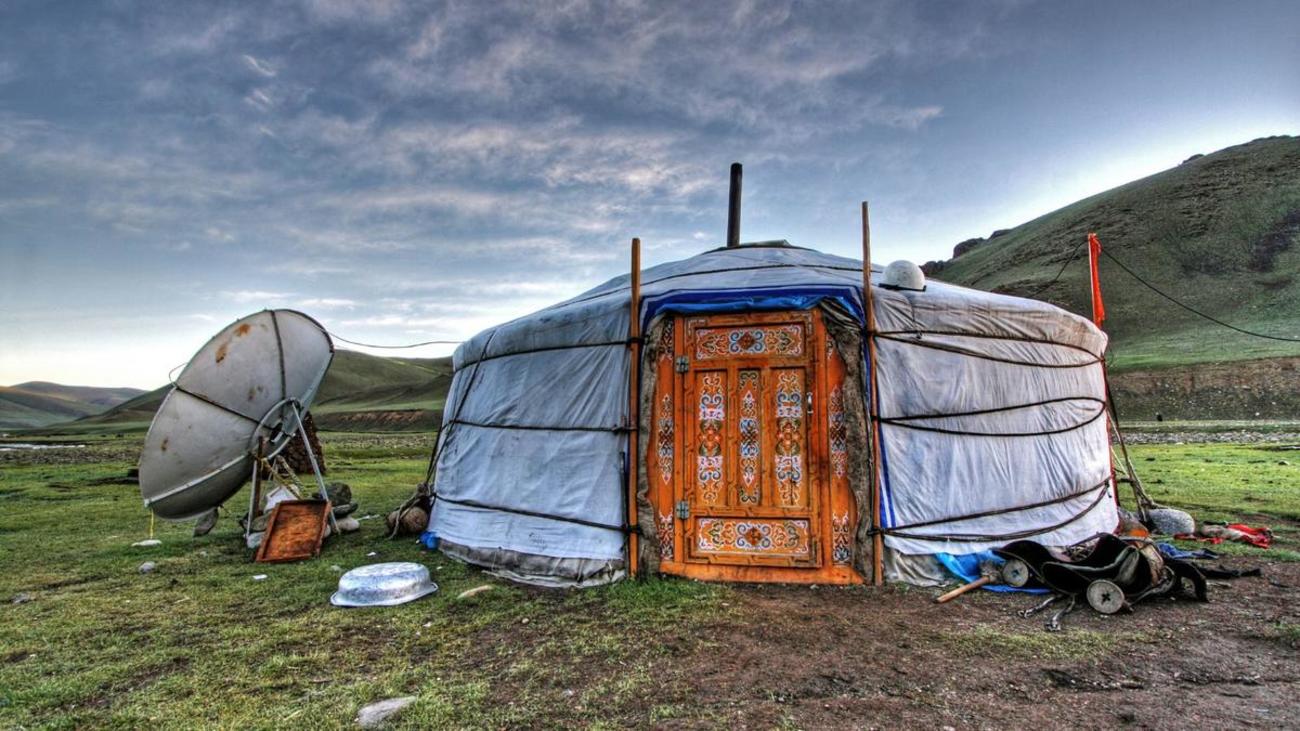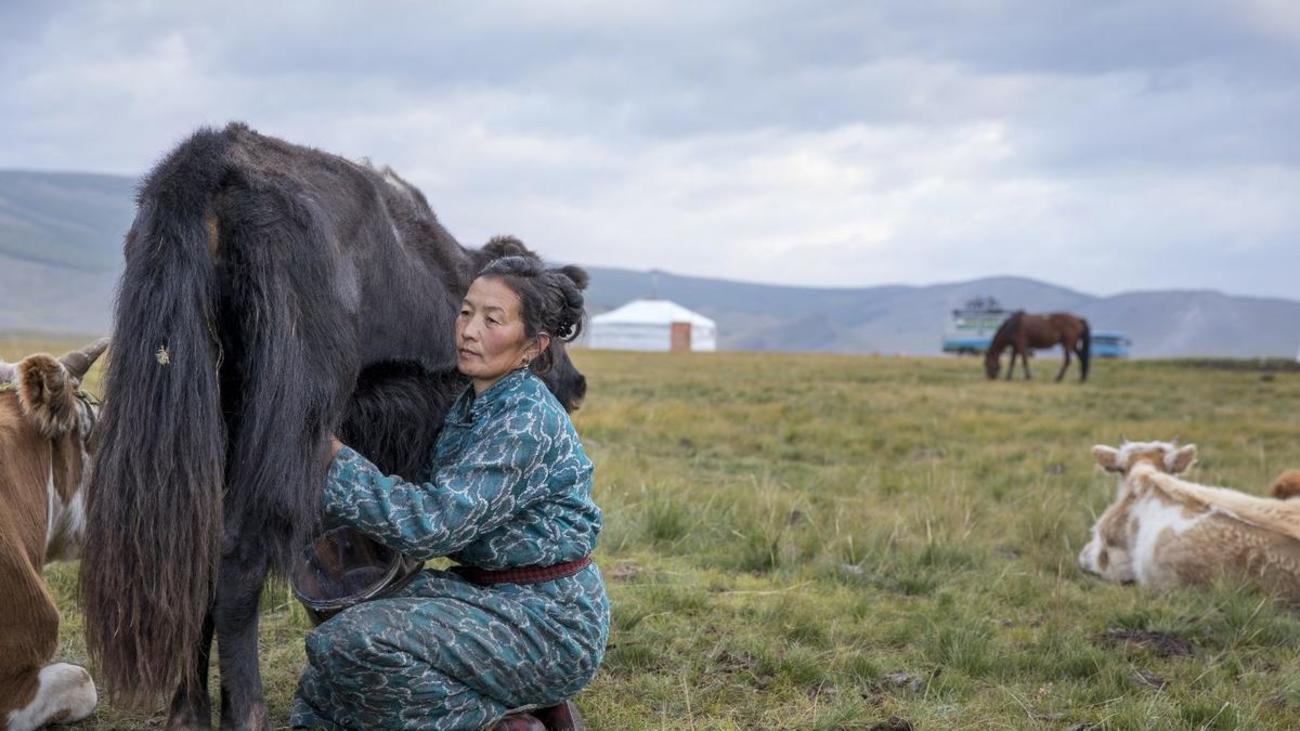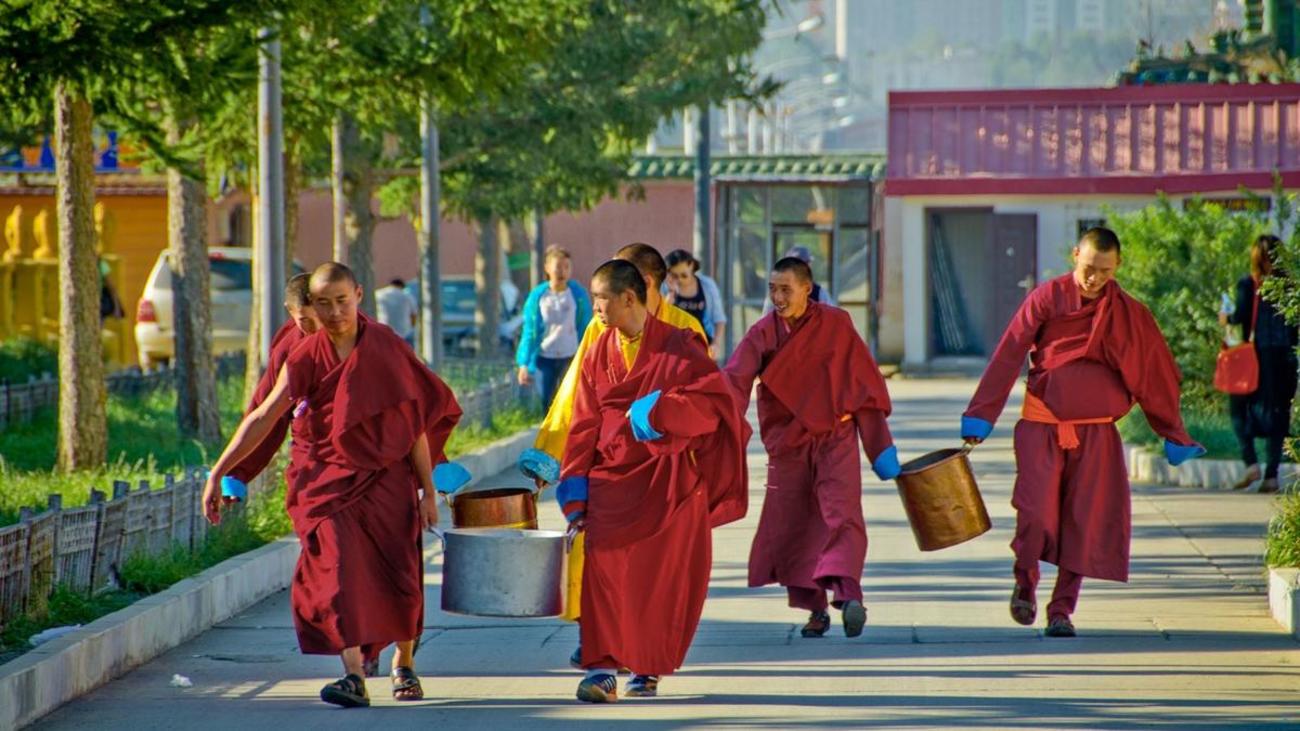If you’re expecting to be served up a Mongolian BBQ when you travel through the country you may be disappointed. The meat and vegetable stir-fry we associate with Mongolia is actually a Taiwanese invention from the 1950s which has become Westernised.
Traditional Mongolian meals are hearty, highly calorific and heavily meat and dairy-based. Animals (mutton, beef and goat) are the main source of sustenance for Mongolians, so meat, fat, milk, cheese and cream feature highly in dishes.
Vegetables are not a strong element of the Mongolian diet as they are a nomadic people. This means they don’t have a fixed habitation and pack up and move from place to place several times a year with their animals, rather than tend to crops.
Food is eaten hot and fresh off the stove and dried meat is a traditional winter staple. Cooking implements include an aluminium pot and small stove, heated by wood collected from wherever they happen to be.
Mongolian food is more about eating to survive rather than having a gourmet experience. But the fascinating thing about this is that the dishes named here have been served up for thousands of years and haven’t changed that much! Let's take a look at what to eat in Mongolia.

1. Khuushur
Pronounced horshure, Khuushur are fried pastries that are traditionally filled with mutton or goat meat. You may also come across modern versions that have a meat-vegetable fusion. As well as being tasty and filling, this finger food also has medicinal properties. Mongolians hold the hot pastry in their hands to stimulate the blood circulation.
2. Mutton Kebabs
Keep an eye out for small food stalls in Ulaanbaatar selling mutton kebabs, probably the closest you’ll come to Mongolian BBQ. This isn’t a typical dish you’ll find at a restaurant. This is more of what to eat in Mongolia if you are interested in street food. It's commonly eaten at festivals, and at wrestling or archery matches.
The kebabs consist of roasted skewers of mutton, chunks of salted fat and whole baby potatoes and are high in protein. They have a rich and savoury flavour.
3. Qurut
If you like cheese for dessert then you should give qurut a go. Qurut is a dried, flakey textured cheese biscuit, made from drained yoghurt or drained sour milk. It can come in balls, chunks, strips or circular flattened form.
It’s a favourite dessert item for Mongolians, who slather theirs with salty yak butter, so you should be able to find it on any restaurant menu. It may also be called aaruul.

4. Orom
If qurut leaves you underwhelmed then you might prefer orom, a rich clotted cream made from boiled cow, yak or goat milk. Yak orom is stronger flavour while goat orom is subtle and sweet.
Orom is typically paired with jam, sugar and hunks of freshly baked bread. Kind of like a Mongolian version of scones with jam and cream. Look out for it as a menu item for breakfast or dessert.
5. Airag
If you’re staying in a ger or family homestay, then be prepared for your hosts to bring out the Airag as a pre or post-dinner drink. This is the traditional national beverage of Mongolia made of fermented mare’s milk which has a 5% alcoholic content.
It tastes like sour watery yoghurt that smells faintly of horse urine. The good thing about it is that it’s suitable for anyone who’s lactose intolerant.
6. Five Fingers
When you stay in a ger you’ll very likely have a dish called Five Fingers on the menu, as it’s typically served for visitors. This is nose to tail eating for the adventurous foodie. Internal organs of an animal, typically sheep or goat, along with the head, rib and legs, are boiled in a pot and served up as a kind of meat surprise.
The dish is eaten with the hands, hence why it’s called Five Fingers. If you’re the guest of honour you may get the most nutritious part, the eyeball.

7. Buuz
These humble Tibetan-style dumplings are considered Mongolia’s national dish. They can usually be found in roadhouses or hole-in-the-wall eateries. The dumplings are stuffed with mutton or goat, flavoured with onion, garlic, and caraway and steamed. You can have them served with mutton soup, a broth of mutton and fat, or eat them on their own.
Leaner meats such as duck or beef are used in high-end restaurants but traditional Mongolian cooking uses mutton or goat as it is believed these fattier meats are higher quality.
As you can see Mongolian fare is quite simple but very tasty and there are a few surprises in store for foodies. If you’re interested you can sample some of these Mongolian dishes at a roadhouse, traditional restaurant, ger or homestay on a Mongolia Tour with Wild Frontiers.
